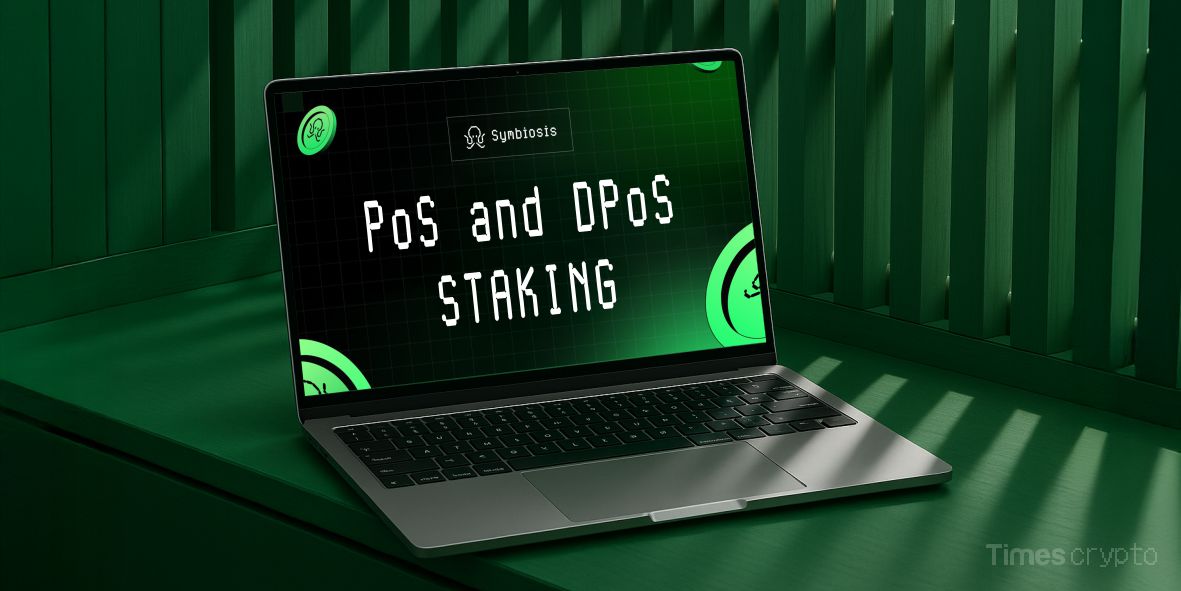Table of Contents
Key Takeaways
- Symbiosis upgrades from PoA to PoS/DPoS, enabling any SIS holder to become a validator or delegator.
- 100,000 SIS are required to run a validator node, while delegators can stake any amount to earn rewards.
- Rewards come from cross-chain swap fees, incentivizing participation as transaction volume grows.
- Further decentralization reduces reliance on a small group of approved node operators.
Symbiosis Embraces Community-Powered Security
Four years after its launch, Symbiosis Finance, a cross-chain liquidity protocol, is going through its biggest governance upgrade so far. The project is transitioning from a permissioned Proof-of-Authority (PoA) design – where only selected groups/entities could run full nodes – to being a fully open Proof-of-Stake (PoS) and Delegated Proof-of-Stake (DPoS).
Simple explanation: This means that any SIS token holder can now take part in securing the network, either by running a validator node or delegating their participation/stake to one. This upgrade reflects Symbiosis’s wider V3 roadmap that includes its own long-awaited Symbiosis Chain for cheaper and faster cross-chain swaps.
How PoS & DPoS Work on Symbiosis
1. Proof-of-Stake (PoS) – For Validators
- Run a relayer node (an intermediary that transmits data between different parts of a network) to process cross-chain transactions.
- Stake at least 100,000 SIS tokens as collateral.
- You can earn rewards from protocol fees, but there are risk penalties if your node underperforms.
2. Delegated Proof-of-Stake (DPoS) – For Passive Stakers
- If you are not running a node, delegate your SIS tokens to validators.
- Earn a share of rewards based on your stake size.
- Diversify risk by spreading stakes across multiple validators.
Different from the veSIS model (which locks tokens for governance power), the team claims that their PoS and DPoS staking are flexible and yield-focused. Users can unstake their participation after a short unbonding period (ideal for those who want rewards with no long-term commitments).
Why This Upgrade is Important
1. Improves Decentralization
Before, only pre-approved entities could validate transactions. Now, the network is secured by a broader, community-driven validator scheme, reducing centralization risks.
2. Enhanced SIS Utility
SIS was primarily used for governance matters and liquidity mining boosts. Now, it also serves to secure the protocol and potentially reduce the circulating supply as the token staked increases.
3. Stronger Incentives for Participation
Think that, if the cross-chain swap volume grows, so do staking rewards. This creates a self-reinforced ecosystem where active validators and delegators can benefit from network activity.
Risks & Considerations
- Validator slashing: Operators and validators can be affected by poor performance, leading to penalties.
- Smart contract risks: Staking operations involve locking funds in these protocols, which, in some cases, could be vulnerable to exploits.
- Market volatility: SIS price volatility can impact staking rewards and collateral value.
On the other hand, and despite these risks, the upgrade to open validation is a big step forward for the protocol, remarking the decentralized spirit of crypto while incentivizing Web3 participation.
A New Era for Symbiosis?
At this point in the blockchain era, the Web3 and DeFi community needs to be empowered more than ever.
The Symbiosis staking upgrade demonstrates that this is not about the staking practice itself but about empowering the Web3 community to secure the network they use and care about. With more validators and delegators, Symbiosis is becoming a more resilient, decentralized, and economically sustainable network.
Final Thought: Will you run a validator node or delegate your SIS? For SIS holders, the choice is clear enough: Stake, delegate, or miss out on rewards.
For more staking-related stories, read: MoonPay Enters Crypto Yield Game With 8.49% Solana Stakin







